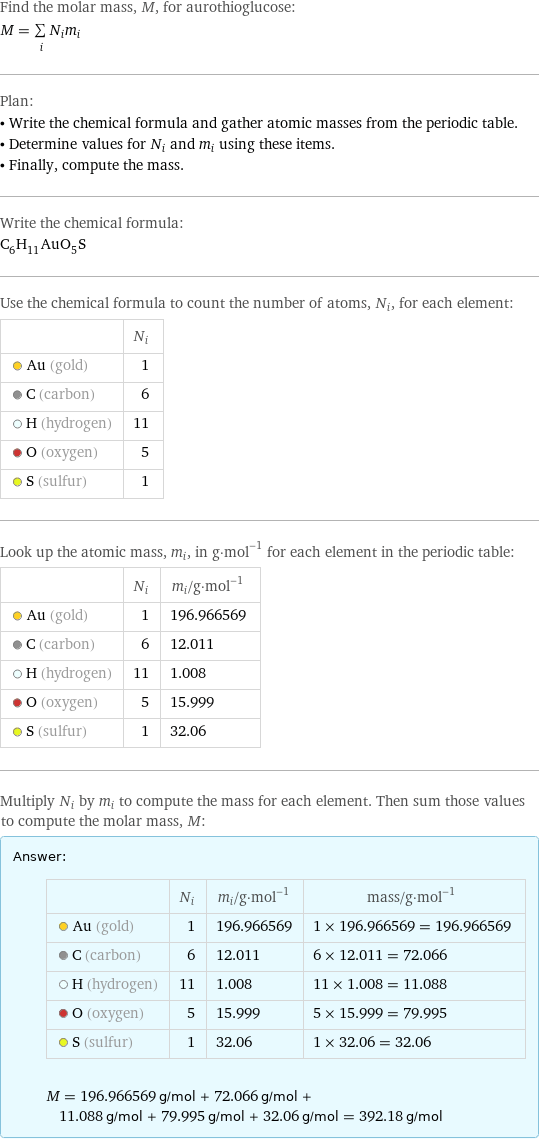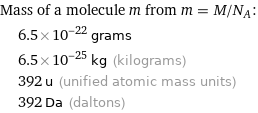Input interpretation

aurothioglucose | molar mass
Result

Find the molar mass, M, for aurothioglucose: M = sum _iN_im_i Plan: • Write the chemical formula and gather atomic masses from the periodic table. • Determine values for N_i and m_i using these items. • Finally, compute the mass. Write the chemical formula: C_6H_11AuO_5S Use the chemical formula to count the number of atoms, N_i, for each element: | N_i Au (gold) | 1 C (carbon) | 6 H (hydrogen) | 11 O (oxygen) | 5 S (sulfur) | 1 Look up the atomic mass, m_i, in g·mol^(-1) for each element in the periodic table: | N_i | m_i/g·mol^(-1) Au (gold) | 1 | 196.966569 C (carbon) | 6 | 12.011 H (hydrogen) | 11 | 1.008 O (oxygen) | 5 | 15.999 S (sulfur) | 1 | 32.06 Multiply N_i by m_i to compute the mass for each element. Then sum those values to compute the molar mass, M: Answer: | | | N_i | m_i/g·mol^(-1) | mass/g·mol^(-1) Au (gold) | 1 | 196.966569 | 1 × 196.966569 = 196.966569 C (carbon) | 6 | 12.011 | 6 × 12.011 = 72.066 H (hydrogen) | 11 | 1.008 | 11 × 1.008 = 11.088 O (oxygen) | 5 | 15.999 | 5 × 15.999 = 79.995 S (sulfur) | 1 | 32.06 | 1 × 32.06 = 32.06 M = 196.966569 g/mol + 72.066 g/mol + 11.088 g/mol + 79.995 g/mol + 32.06 g/mol = 392.18 g/mol
Unit conversion

0.39218 kg/mol (kilograms per mole)
Comparisons

≈ 0.54 × molar mass of fullerene ( ≈ 721 g/mol )

≈ 2 × molar mass of caffeine ( ≈ 194 g/mol )

≈ 6.7 × molar mass of sodium chloride ( ≈ 58 g/mol )
Corresponding quantities

Mass of a molecule m from m = M/N_A: | 6.5×10^-22 grams | 6.5×10^-25 kg (kilograms) | 392 u (unified atomic mass units) | 392 Da (daltons)

Relative molecular mass M_r from M_r = M_u/M: | 392